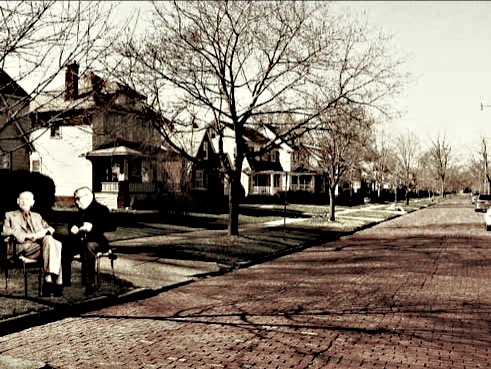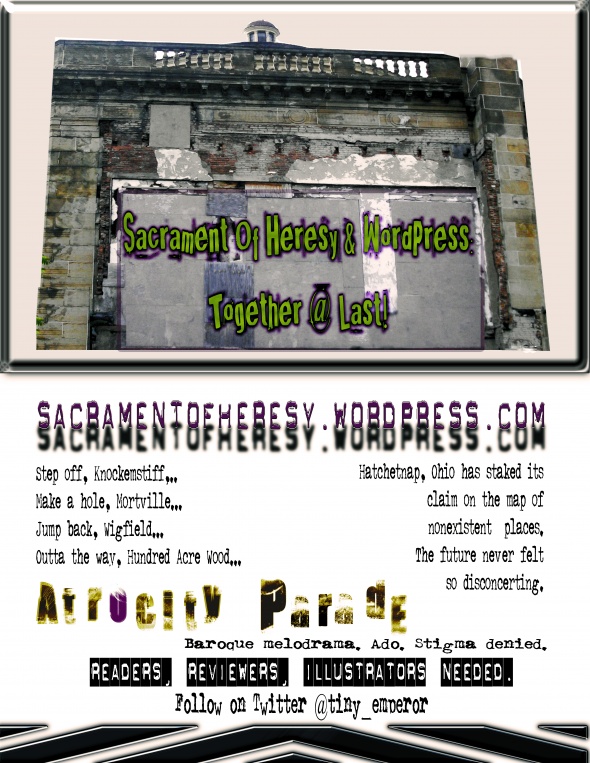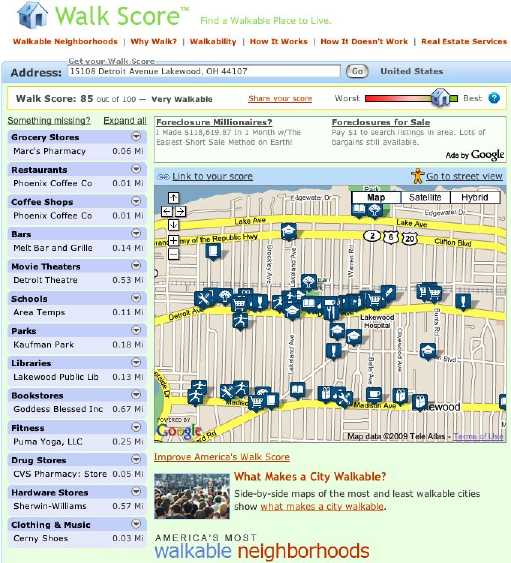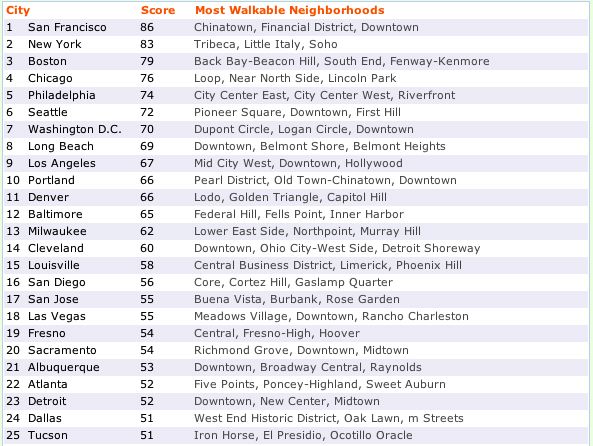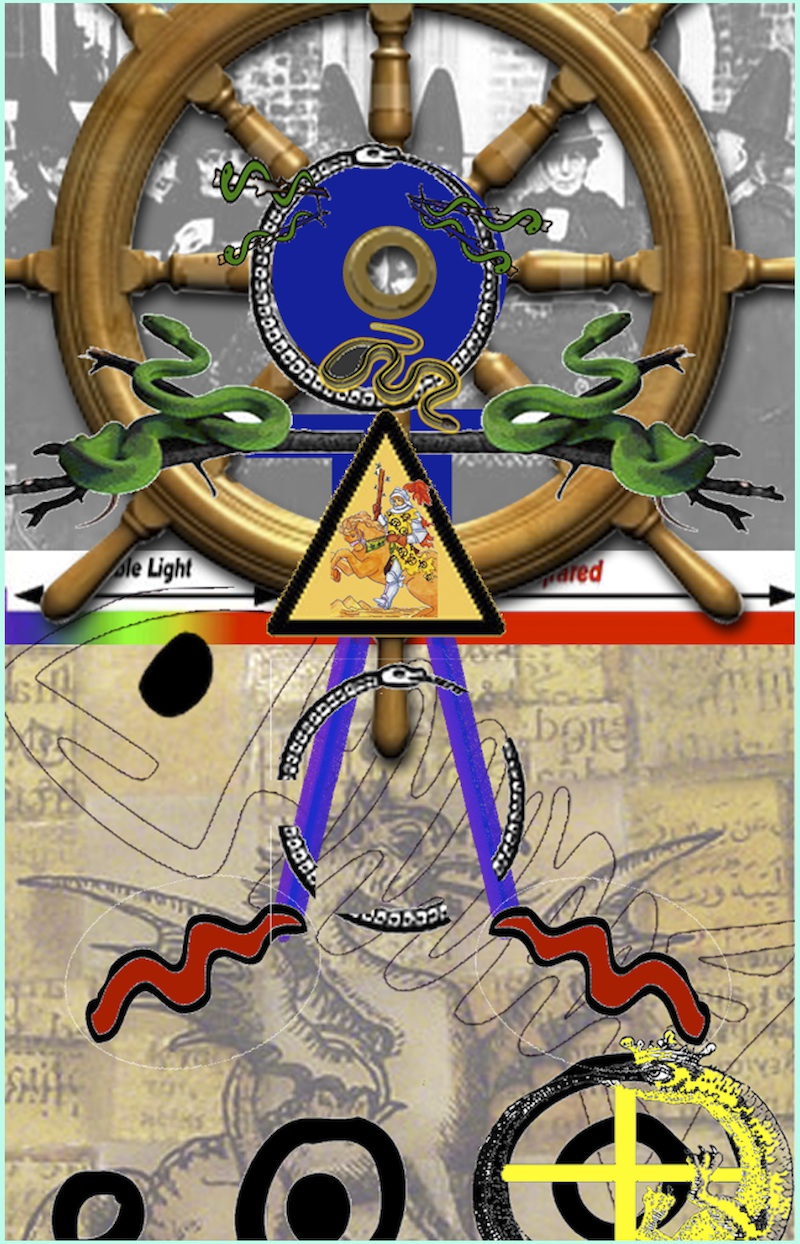
Totem For Lakewood; 2010 S.Calhoun
II. Roots of (My) Urbanology (part two of three parts)
In 1972, my mother suggested that I might find Lewis Mumford interesting. Although I was mostly concerned with–in 1972–squeezing through various doors of perception, I managed to wander through Mumford’s The Conduct of Life, along with Huxley and Laing and Watts. The Conduct of Life was written in 1951. (I suppose hardly anybody reads Mumford anymore.) A few years after returning to Cleveland in 1992, I remember revisiting Mumford in a series of conversations with my mother about Cleveland, cities, the de-industrialization of the Mid West, and, the curse of Ronald Reagan. She insisted I read The Death and Life of Great American Cities by Jane Jacobs. (1961!) I did so. I re-read Mumford’s The City in History. I explained to my dear mother what I meant when I described Mumford to be a constructionist mystic.
In the fall of 2005, again due to the result of a remarkable fortuity, I met the Director of the Lakewood Public Library, Kenneth Warren; (to myself I noted: heck, a constructionist mystic!) I learned of the Visionary Alignment, the Lakewood Observer Project, and soon enough–even though I was a wash-a-shore–was in the thick of it. At the outset, among the suggestions I introduced to the Observer crew was a ripe and dangerous speculative question:
What would it be like to live in a city devoted to knowing itself better than any other city ever has known itself?
I didn’t really get at the time that I was both implying a name for the practical learning process of the project being unfolded by a handful of intrepid Lakewoodites and Observers, and, idealizing a highly charged constellation of conflicting fantasies about what is the very stuff of civic knowledge-seeking and civic knowing. The name/process is simple: civic self-knowledge, but the charging of the civic constellation is altogether complex, entangled, and, as we soon enough came to understand, is plain difficult.
Community, know thyself? Really? Plug into the circuit and call forth shadow, and every variety of impossible dream, and quixotic obstacle?
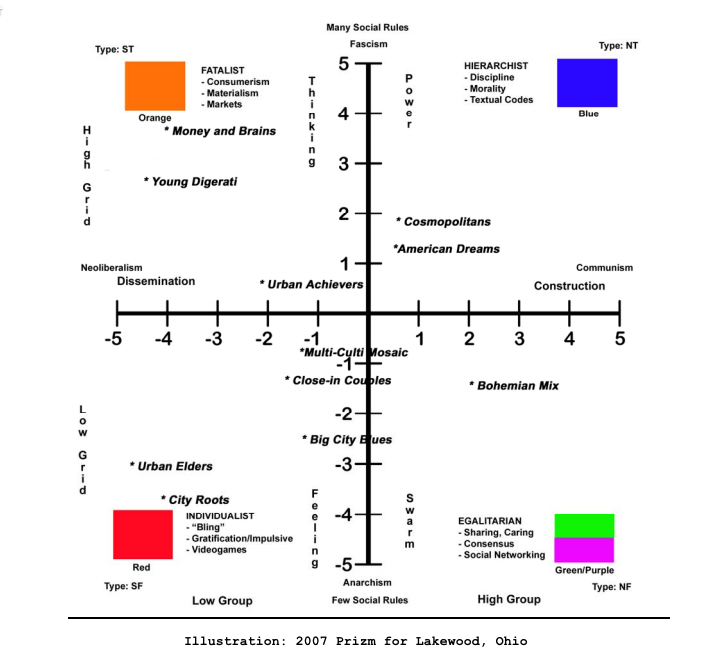
Lakewood Prism (demographic analysis schema)
(from a presentation by Kenneth Warren, – Lakewood Future Tools – Understanding Lakewood: Communities and Memes; March 2005) See also the pdf, Community Capacity.
(Lakewood Ohio) Place-Making with Good Neighbors on the Lake
· Flow =Quality of Life
· Increase the flow states in the community.
· Refresh the conventional sense of local living in Lakewood by engaging good neighbors.
· Cultivate the habit of good neighbors listening to one another.
· Activate through the Lake a sense of the liminal among good neighbors, that is, the threshold of physiological or psychological response to the unique energy that permeates the people and place.
· Make Lakewood permeable to new experience, ideas, mechanisms and structures among good neighbors
who are joining society to economy, conscience to knowledge.
· Obtain commitments from good neighbors to act on projects that will stretch beyond circular, selfjustified egocentric gated communities.
· Know there is a beginning point and ending point to each good neighborhood.
· Realize that a commitment to sustainability is shift in consciousness; it is not about constructing a pretty
fence.
· Understand that places and institutions can get high-jacked by interests that lie outside the particular community, i.e. absentee landlords, absentee corporations and absentee public employees.
· Construct IEDs – Improvised Economic Devises
Ken Warren, Lakewood Visionary Alignment
During the summer of 2006 I happened upon my current research focus, serendipity in adult development. Under the auspices of The Lakewood Observer and Lakewood Public Library, I devised a small project. I would quickly teach street anthropologists to conduct a survey, and then from their gathering of this data set, build out with them a very constrained ethnography focused on a single question, What brought you, [the subject,] to live in Lakewood?
For two weekends a dozen or so of us fanned out through Lakewood and conducted this survey. We then spent an afternoon debriefing the results. We never assembled the final work product, but, in reviewing the surveys on my own time, I realized an amazing quality threaded itself through many of the survey results.
I can capture this quality in one of the answers to the signal question.
My husband and I came to live in Lakewood because he had just taken a job at the hospital in Fairview Park and we were in a very temporary sublet in Rocky River. One day, at the grocery store there, I asked the gal at the cash register if she knew of any good resources for tracking down nice rentals in Rocky River. Before she could answer a woman standing behind me in the checkout line tapped me on the shoulder and told me that her sister had a first floor, two bedroom apartment available in her Lakewood house. I jotted her sister’s number down and we moved in the very next month.
Not only were the surveys littered with similar narratives, but having my nose pushed close to such stories compelled me to consider my own.
So: I had to reckon with the robber in 1974 who made it all possible by trying to kill me.
In other words, I discovered my interest in the problem of serendipity in adult development by reflecting on my apparently fortuitous encounter with a robber in 1974. This reflection itself was inspired by asking residents of Lakewood what was it that brought them to Lakewood to live.
Keynote: communities collect the results of serendipity.
(Technically speaking: communities aggregate the product of intricate conjunctions of agentic, environmental, and temporal fortuities.)

